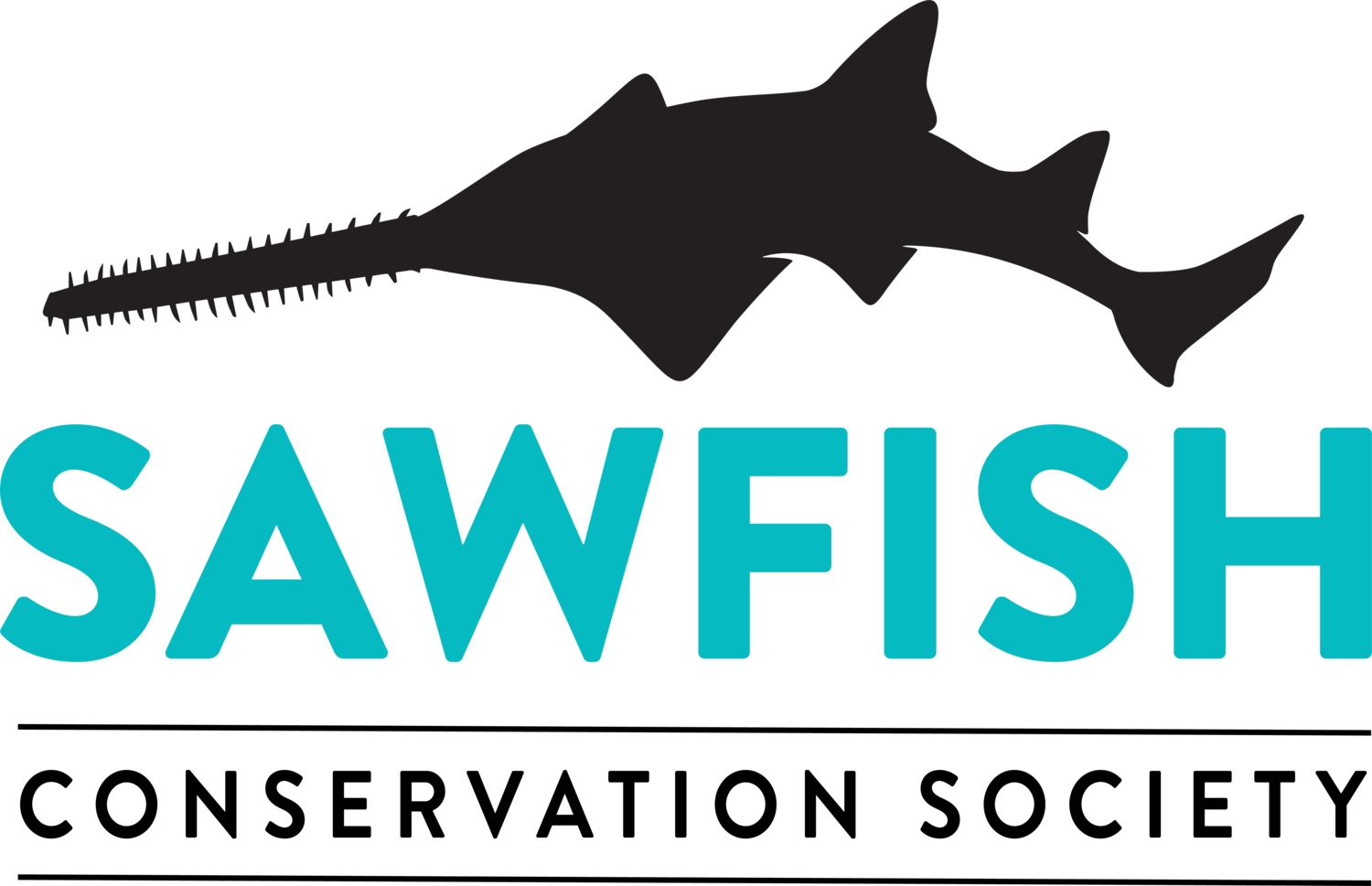Become a sawfish researcher for a day!
The Sawfish
Conservation Society (SCS) is partnering with researchers from around the
world to launch the See A Saw Citizen Science Sawfish Project in order to better understand the highly threatened sawfishes, and you can help!
 |
| The See a Saw program and its instructional video can be found at www.sawfishconservationsociety.org |
Sawfish
numbers have greatly declined in the last 100 years due to fishing and habitat
modification and now these fishes are close to becoming extinct. Sawfishes are
often caught accidentally, but sometimes fishers kill these animals or cut off
their saws to detangle them from nets/fishing lines or to collect a souvenir of
their catch. If a sawfish is released alive after its saw has been removed it
is unlikely to survive, as it is depends on its saw for hunting and for
protecting itself from predators.
 |
| Saws from sawfish can be easily entangled in fishing lines and nets. |
Today,
sawfish are protected in a large and increasing number of countries, and it is
now illegal to harm sawfish, which includes removing their saw, in these countries. In addition, international trading, and in some countries, domestic
trading of removed saws is also illegal.
Although
the removal of sawfish saws has negatively impacted sawfish, researchers have
discovered how to turn this negative into a positive and can use previously
collected saws to gain important information on sawfish, which can then be used
to conserve the remaining populations of sawfish. This can be very useful as old
sawfish saws are easier to find and work with then live sawfish.
 |
| A pile of saws collected from fishers, which are being used to better understand the rare and threatened sawfishes. |
Recent
research has shown that it is possible to identify the species, size and occasionally
the sex of a sawfish from its saw. In addition, researchers are now able to
extract DNA from old sawfish saws, which
can be used to gather important information about the genetic health and other
aspects of the different sawfish populations.
Scientists
are now taking their research one step further and are looking at regional
differences between these saws to see if the measurements and tissue samples from
these saws can be used to determine where saws come from and how populations
have changed through time.
 |
| Please measure, take a photograph (as shown above) and report your old sawfish saw to the SCS. |
 |
| The Sea a Saw program webpage |
Updates
will be posted on the SCS website as this program progresses, so make sure to
check back to look for these updates.
We are looking forward to working with you all and appreciate any information you can provide. Thank you for your help in better understanding these incredible and endangered fishes.
We are looking forward to working with you all and appreciate any information you can provide. Thank you for your help in better understanding these incredible and endangered fishes.
